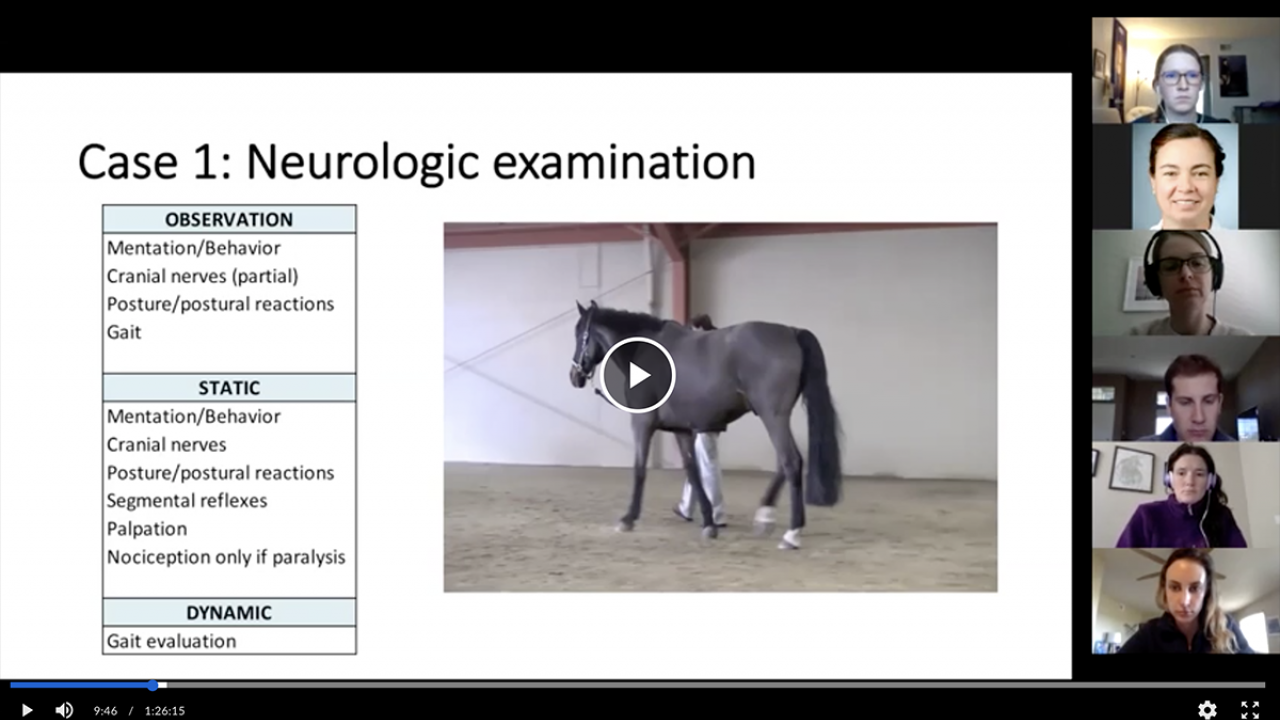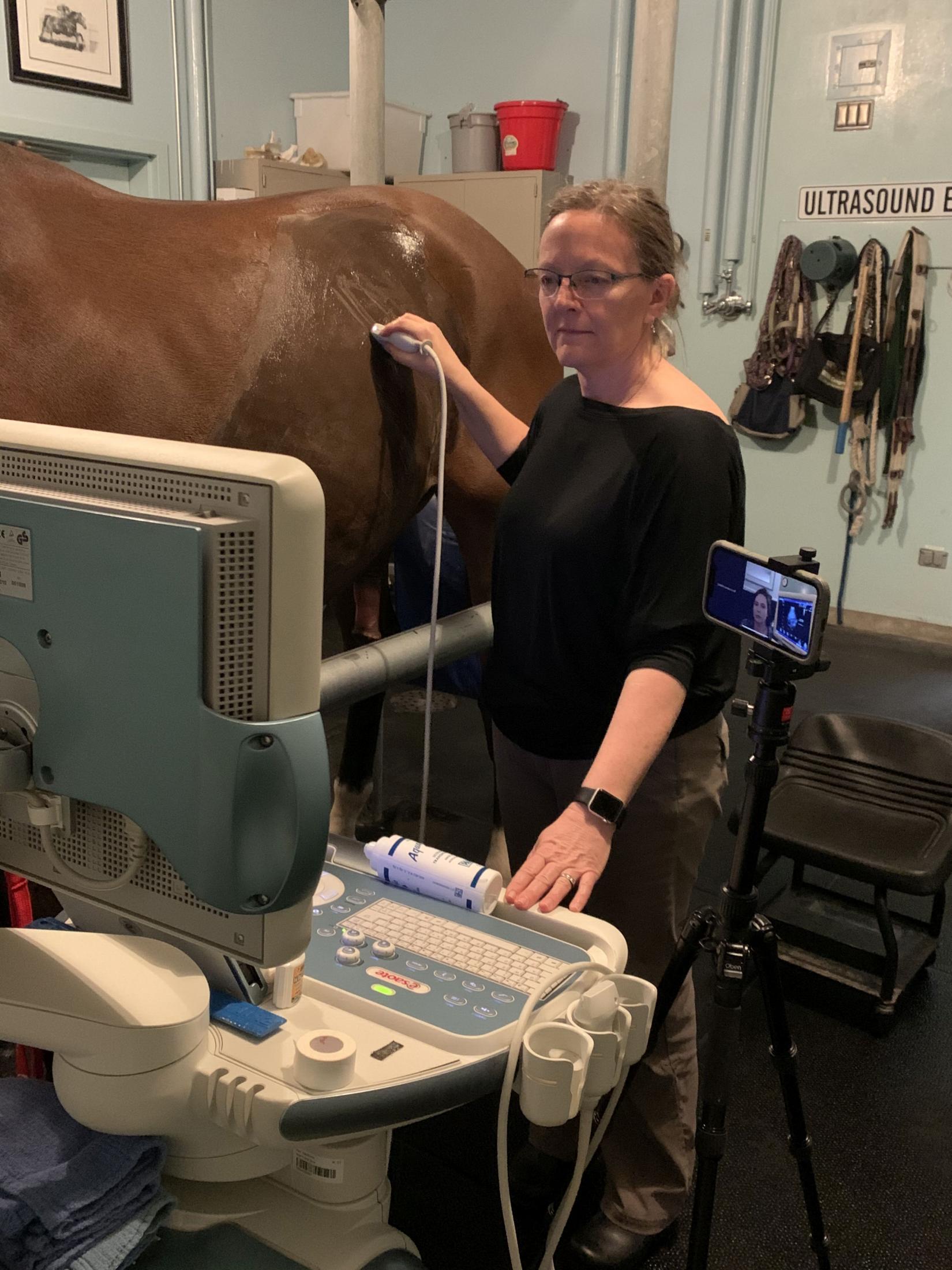
UC Davis Alters DVM Curriculum Amid COVID-19 Pandemic
The UC Davis School of Veterinary Medicine (SVM) recently altered its curriculum to adjust to the changing academic landscape during the COVID-19 pandemic. To ensure continuity of student learning in the DVM curriculum, the SVM’s goal was to provide continued access to veterinary training while safeguarding student health and well-being. With that goal in mind, the faculty revamped curriculum delivery for all first- through fourth-year veterinary students.
Understanding that students would have limited access to study halls and laboratories on campus for a month or longer, the SVM Curriculum Committee (for first- through third-year students) and the Clinical Education Committee (for fourth-year students) assessed several different instructional models, choosing one that would be the least daunting to students who are already in the midst of the most challenging years of their academic careers.
Transitioning to distance learning platforms for lectures and coursework for first- through third-year students was, for some faculty, straightforward. However, for those who had not worked with video conferencing tools previously, this was a rapid learning curve. Alternatives for students to access hands-on experiential learning, laboratories, and clinical skills were sought after to replace these normally face-to-face teaching sessions.
On March 19, the Veterinary Medical Teaching Hospital (VMTH) closed for appointments other than emergencies and other critical care requirements. In addition, all fourth-year students on clinical rotations throughout the VMTH were excused indefinitely. The need to physically distance from one another and limit the number of people in the clinic has caused a major shift in learning opportunities for fourth-year students. Faculty have moved to the use of video conferencing for rounds and have added many innovative case modules and journal club activities to assist students with information.
First- Through Second-Year Students
Lectures and coursework for students in the first two years of DVM training were moved to distance learning for the remainder of the spring semester. The Curriculum Committee—realizing the high level of stress and anxiety of students in the face of the COVID-19 pandemic—concluded that administering the Comprehensive Year Two Examination as traditionally scheduled would be a hardship for some, and therefore, it will be offered on two dates – one in late May and one in July.
The committee also recommended that students be allowed to elect a temporary option of “pass/not pass” or traditional letter grading for the remaining spring semester courses.
“We believe this decision mitigates any actual or perceived negative effects on students due to the rapid change in instructional modalities,” stated Dr. Joie Watson, associate dean for professional education.
Third-Year Students
Third-year students will experience a delay in their transition to the clinical training year. Normally, the clinical requirement for a DVM student at UC Davis is a 58-week fourth year that begins in mid-April. The Class of 2021’s clinical year will be delayed until at least May 25. This six-week period will include course work, as well as clinical rotations that will provide alternate activities through distance learning platforms for access to discipline specific content and learning opportunities.

Fourth-Year Students
With no student access to the VMTH learning environment, the Clinical Education Committee employed alternative methods for clinical training to augment students’ academic records to satisfy degree requirements under the governance of the University of California and the American Veterinary Medical Association Council on Education. Individual student records were analyzed for all remaining core requirements, and students were assigned to “virtual rotations” to complete their training programs.
The transition to “virtual rotations” offers students the opportunity to observe clinical examinations and procedures via online platforms. As an example, students on the Large Animal Ultrasound Service rotation were able to observe procedures via video chatting, allowing them to gain the same level of knowledge as if they were present. Dr. Mary Beth Whitcomb has done this in the past to consult with U.S. and international veterinarians to help them through difficult scans in real time.
“I thought, ‘why can’t we do the same with our students?’” said Dr. Whitcomb upon learning the VMTH was excusing students from in-person rotations. “The technique has worked well, and our students are happy to have the opportunity to be present ‘virtually’ for the emergency appointments that we’re still receiving.”
“While there is no replacement for true clinical rotations in the VMTH, I am grateful for the work UC Davis administrators and faculty have done to continue our education through online learning,” said Taylor Ragland, fourth-year DVM student. “My professors ensured my experience on the Large Animal Ultrasound Service rotation was a valuable one, by providing me with great resources and real-time case exposure.”
Additionally, any student who has an elective or core rotation removed from their schedule can reserve the right to return to the VMTH—with no additional fees or tuition assessed—when physical distancing guidelines are lifted.
Measures were also put into place for students in distress during the quarantine period. Dr. Watson made herself available remotely for student meetings, as did the SVM’s two counselors dedicated to students.
“We know that this is a trying and unpredictable time for all of our DVM students,” said Dr. Watson. “Dr. Karl Jandrey, our dean of admissions and student programs, and I have made ourselves available to meet with individual students and to hold virtual town hall meetings with an entire class in our best attempts to meet student needs. We will work hard to ensure that each student is able to fulfill their expectations of a quality veterinary medical education on a timeline that fits with their personal risk assessment.”
The university also offered emergency financial resources through its financial aid office and an economic crisis resource center.
# # #
